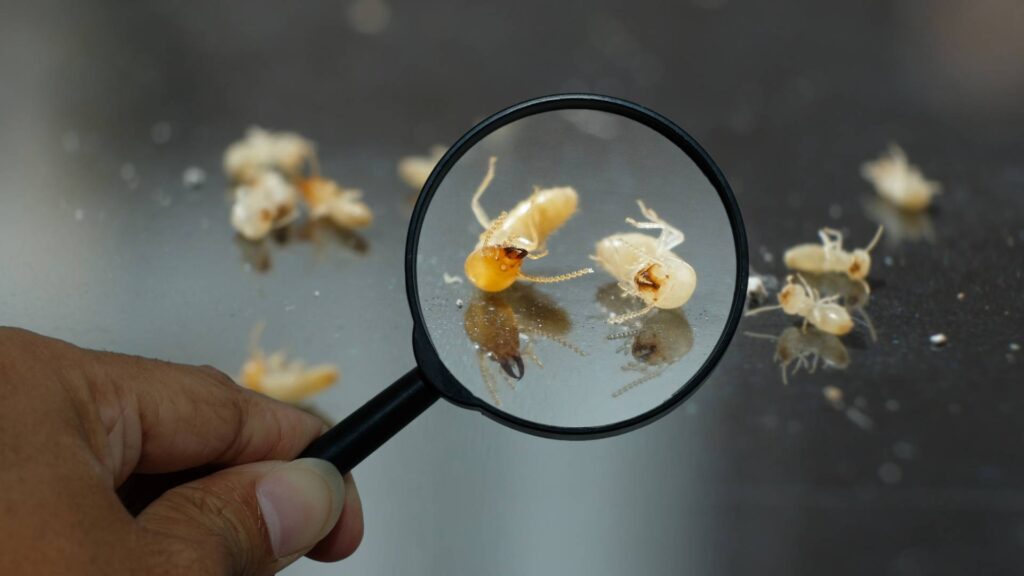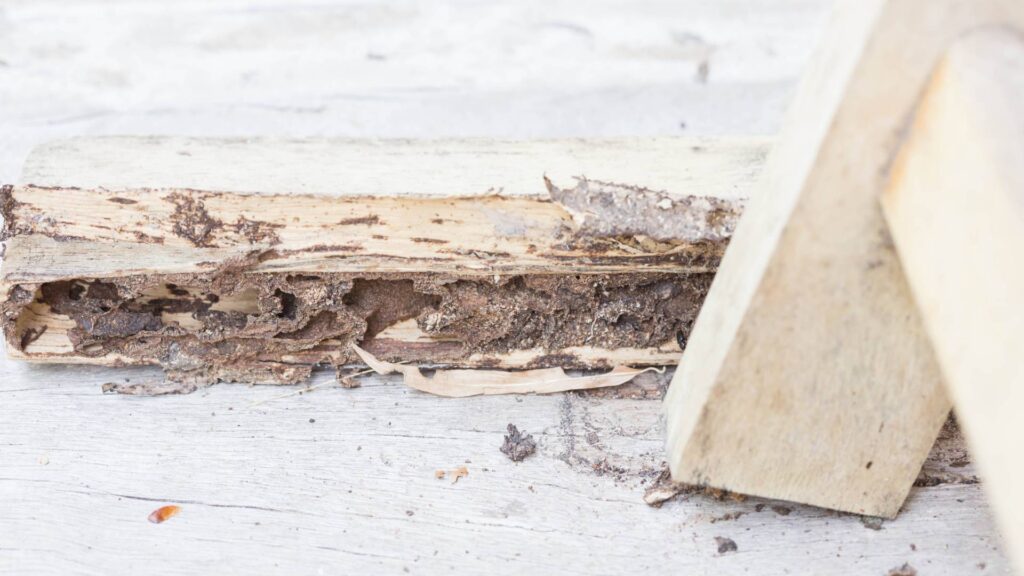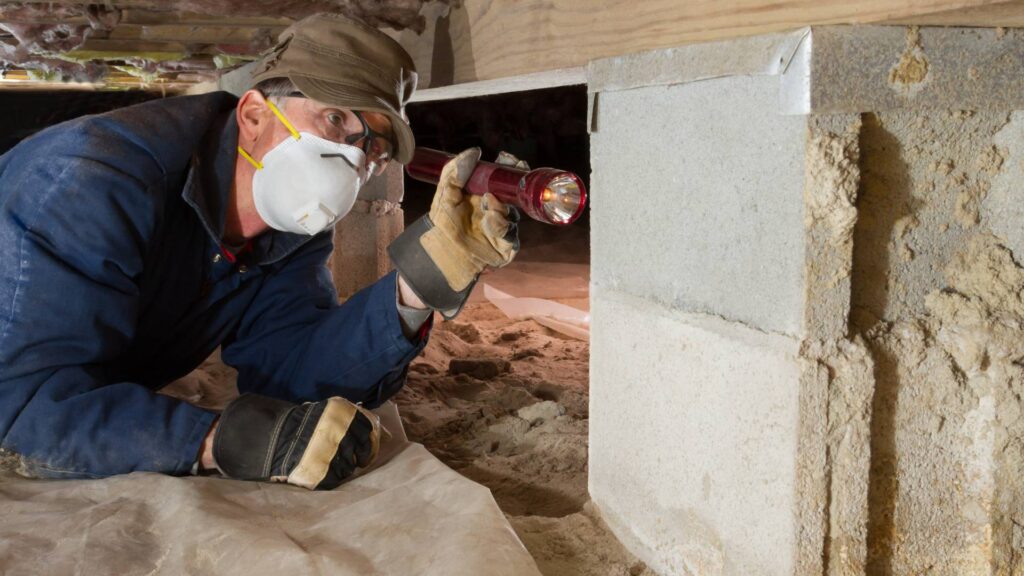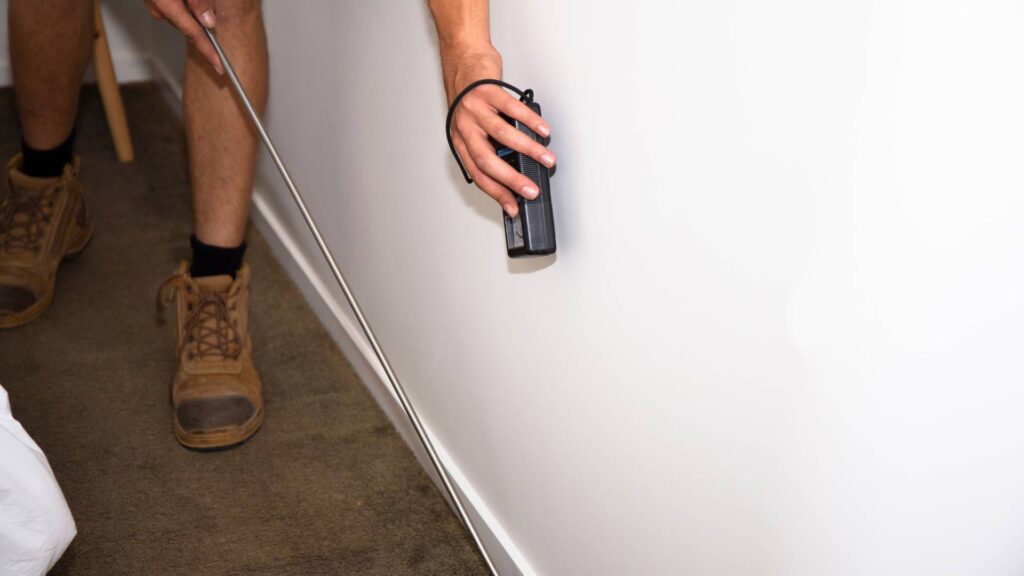As a pest control expert with 27 years of experience helping homeowners combat unwanted invaders, I understand the worry and frustration that termites can cause. These silent destroyers can inflict serious damage on your property if left unchecked.
But fear not! This guide equips you with the knowledge to identify signs of termite infestations, explore effective home remedies for early intervention, and understand when to seek professional help.
How To Identify Termites?
Here are some common signs of a termite infestation:
- Mud tubes: Subterranean termites build these tubes to travel between the ground and your house. Look for them on foundation walls, crawlspaces, and basements.
- Hollow-sounding wood: Tap lightly on wooden beams, walls, or furniture. Termite-infested wood will sound hollow when tapped.
- Discarded wings: Look for piles of tiny wings near windows or doors. These are shed by swarmer termites, a sign of a potential infestation.
- Doors and windows sticking: Warping wood due to termite damage can cause doors and windows to become difficult to open or close.
- Frass (termite droppings): Tiny piles of wood debris near baseboards or around damaged wood might indicate termite activity.
Early detection is key. The sooner you identify a termite problem, the easier and less expensive it will be to eradicate them.
Different Types of Termite: Subterranean Termites and Drywood Termites
There are two main types of termites:
- Subterranean termites: These termites live in the soil and build mud tubes to access wood sources. They’re the most common type in the United States.
- Drywood termites: These termites live within the wood itself and don’t require soil contact. They’re less common but can be just as destructive.
Identifying the type of termite is crucial because different treatments work better for each species.
Ready for a bug-free backyard oasis? Click here to discover how to keep pests at bay the pet-safe way.
DIY Methods to Combat a Termite Infestation

While professional pest control is always an option, several natural methods can effectively combat a termite invasion if caught early. Here are some do-it-yourself options to consider:
Using Boric Acid
Borax is a natural white powder that dehydrates and kills termites. Here’s how to use it:
- Mix equal parts boric acid and flour.
- Lightly dust the powder around areas where you suspect termite activity, like cracks, crevices, and near foundation walls.
- Reapply every few weeks, especially after heavy rain or disturbances.
Diatomaceous Earth as a Termite Killer
Diatomaceous earth (DE) is a powder made from fossilized algae. It acts like microscopic shards, dehydrating and killing termites on contact.
Apply DE similar to boric acid, focusing on entry points and termite trails.
Orange Oil Treatment
Orange oil, extracted from orange peels, is a natural insecticide with repellent properties against termites. You can use it in two ways:
- Soak a cotton ball in orange oil and place it in suspected termite areas.
- Dilute orange oil with water (according to product instructions) and spray directly on termite trails or entry points. Exercise caution, as concentrated orange oil can irritate skin and eyes.
Neem Oil to Kill Termites
Neem oil a vegetable oil derived from the neem tree, is a slow-acting termite deterrent. It disrupts termite molting and feeding habits. Here’s how to use it:
- Mix neem oil with water according to product instructions.
- Spray the solution directly on termite trails, entry points, and around the house perimeter as a barrier.
Cardboard Traps for Termite Capture
Cardboard traps are a simple way to monitor and capture termites. Here’s how to make one:
- Dampen a piece of cardboard.
- Place the cardboard near suspected termite activity (around foundation walls or crawlspaces).
- Check the trap regularly. Termites are attracted to damp cellulose and will become trapped in the cardboard. You can then dispose of the cardboard and trapped termites.
Vinegar Solution for Termite Prevention
While not a direct killing method, white vinegar can be used as a preventative measure. The acidic nature of vinegar deters termites.
Mix equal parts white vinegar and water in a spray bottle and apply it around the house perimeter, focusing on foundation cracks and entry points.
Sunlight Exposure to Eliminate Termites
Termites thrive in dark, damp environments. Exposing termite-infested furniture or wooden items to direct sunlight for several hours can be an effective way to kill them by drying them out.
Transform your outdoor space into a safe haven for your pet. Learn more about our natural and effective pest control methods.
When to Seek Professional Pest Control Companies

While home methods can be effective for early infestations, there are situations where professional help is necessary:
- Large-scale Infestation: If you see signs of a severe termite problem, like extensive wood damage or large swarms of termites, home methods might not be enough. Professionals have stronger treatments for termite protection and can ensure complete eradication.
- Difficulty Finding Termites: If you’re unsure about the type of termite or the extent of the infestation, a professional inspection can provide valuable insights and guide the best course of action.
- Treatment Complexity: Subterranean termite infestations often require specialized baiting systems or soil treatments that are beyond the scope of DIY solutions. Professionals have the expertise and tools to handle these complex situations.
Risks Associated with DIY Termite Treatment:
- Incomplete Eradication: do it yourself methods might not eliminate the entire termite colony, leading to a resurgence of the problem later.
- Safety Concerns: Some DIY products, like boric acid, can be harmful if not handled properly. Professionals have the training and equipment to ensure safe application.
- Misdiagnosis of Termites: Mistaking other insects for termites can lead to applying the wrong treatment methods and wasting time.
Professional services complement home methods by providing a more comprehensive approach to termite control. Professionals can identify the termite type, assess the extent of the infestation, and apply targeted treatments to eradicate the colony. They can also offer preventative measures to minimize the risk of future infestations.
Take the first step towards a pest-free, pet-safe backyard. Dive into our guide on eco-friendly pest management now!
Prevent Termites to Live In Your House

Preventing a termite infestation is crucial to safeguarding your home. Here you have some methods to do it:
Maintenance and Prevention Tips
Here are some strategies to prevent future termite problems:
- Regular Inspections: Schedule annual inspections by a qualified termite inspector to identify any early signs of infestation.
- Moisture Control: Address any moisture issues around your foundation, such as leaky pipes or clogged gutters. Termites thrive in damp environments.
- Wood Debris Removal: Remove any wood debris piles near your house, as they can attract termites.
- Foundation Sealants: Seal cracks and gaps in your foundation to prevent termites from entering your home.
- Ventilation: Ensure proper ventilation in crawlspaces and basements to prevent moisture build-up.
Long-term measures to deter termite infestation
- Mulch Management: Maintain a minimum six-inch gap between mulch and your house foundation. Termites can use mulch as a bridge to access your home.
- Wooden Structures: Avoid building wooden decks, patios, or fences directly against your house.
- Firewood Storage: Store firewood away from your house foundation to minimize termite attraction.
Environmental Management:
- Eliminate Moisture Sources: Repair leaky faucets, pipes, and air conditioners to prevent moisture build-up inside your home.
- Proper Drainage: Ensure proper grading around your foundation to direct water away from your house.
Say goodbye to pests and hello to peace of mind. Check out our top tips for keeping your backyard safe for your four-legged friends.
Get Rid of Termites: Maintaining a Termite-Free Home

Eradicating termites requires a two-pronged approach: effective treatment and consistent prevention. The methods outlined in this guide empower you to take action against these pests. Remember, early detection is paramount.
If you suspect a termite problem, don’t hesitate to tackle it head-on. By combining natural remedies, professional expertise when needed, and ongoing vigilance, you can create a lasting termite-free environment for your home. Now, let’s delve into the world of termite identification and explore how to combat these destructive insects!
Frequently Asked Questions About Best Way to Kill Termites in House
Is your house ruined if you have termites?
Your house is not necessarily ruined if you have termites, but significant damage can occur if the infestation is not treated promptly. Termites can weaken structural components over time, leading to costly repairs.
Is it safe to stay in a house with termites?
It is generally safe to stay in a house with termites, as they do not pose a direct threat to human health. However, the structural damage they cause can eventually lead to unsafe living conditions if left unaddressed.
Don’t let pests ruin your outdoor fun! Discover how to keep your backyard safe and enjoyable for both you and your pet today.
How quickly can you get rid of termites?
The time it takes to get rid of termites depends on the extent of the infestation and the treatment method used. Professional pest control services can often eliminate termites within a few days to a few weeks, while home methods may take longer to fully eradicate the problem.



